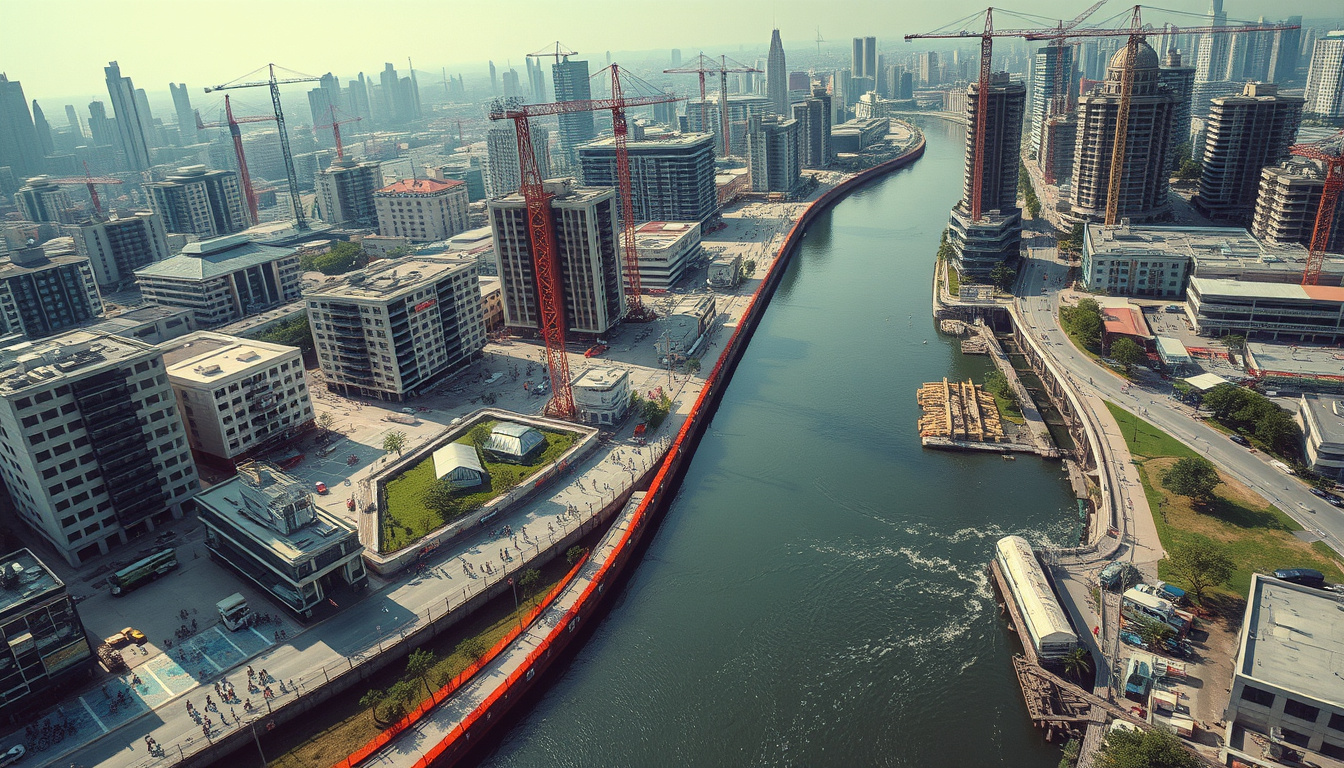Toronto’s picturesque Don River is set to undergo a significant transformation starting May 20, 2025, and continuing for over two years due to essential construction work for the West Don Crossing bridge. This construction project, spearheaded by Metrolinx, is critical for the expansion of Ontario Line trains crossing the Don Valley. During this period, large sections of the river will be closed to the public, requiring all local stakeholders to stay informed about access changes and environmental measures being implemented to protect the region’s natural habitat. In this article, we delve into the intricacies of the Don River closure, outlining the construction details, timelines, and the environmental safeguards in place to preserve the river’s ecosystem and ensure a sustainable future.

Key Takeaways
- The Don River will be closed from May 20, 2025, to September 15, 2027, for West Don Crossing construction.
- Environmental measures include the installation of a cofferdam and restoration of riverbanks with native plants post-construction.
- Boaters are advised to follow specific portage routes indicated by buoys during the closure period.
Understanding the Impact of the Don River Closure
The closure of a segment of the Don River in Toronto, commencing on May 20, 2025, and expected to last until September 15, 2027, represents a significant step in advancing urban infrastructure through the construction of the West Don Crossing bridge. This vital structure will provide necessary support for Ontario Line trains as they traverse the Don Valley, thereby enhancing public transport connectivity in the region. However, the closure is not merely procedural; it stems from urgent geological concerns about slope instability and erosion in the area surrounding the river. To tackle these challenges, Metrolinx plans to implement a comprehensive construction strategy, which includes the installation of a cofferdam designed to keep sections of the riverbed dry and secure during the building process. Additionally, large stones will be strategically placed for slope stabilization to further ensure the integrity of the riverbanks. For recreational boaters, guidelines will be issued to navigate the closure, highlighting specific portage routes marked by buoy markers to ensure safety and compliance. Furthermore, Metrolinx and environmental stakeholders are committed to implementing sustainable practices throughout the project. This includes minimizing vegetation removal, planning for the restoration of riverbanks with native plant species after construction is completed, and preventing sediment runoff to safeguard fish habitats, demonstrating a dedication to ecological preservation even amid urban development. As the project unfolds, stakeholders urge the public to stay informed about ongoing developments and potential impacts on recreational activities.
Construction Details and Environmental Measures
The construction of the West Don Crossing bridge not only aims to enhance transportation infrastructure but also to prioritize environmental sustainability during its execution. To mitigate the impact of the long-term closure on local ecosystems, Metrolinx has outlined several key strategies. First, the use of a cofferdam will not only facilitate construction by keeping areas dry, but it will also prevent potential contaminants from entering the river. This proactive measure is crucial for protecting the aquatic life that depends on the Don River for their habitat. Additionally, careful monitoring of vegetation removal will be conducted to ensure that only necessary areas are affected, allowing for a more efficient recovery post-construction. By committing to the restoration of riverbanks with indigenous plants, the project aims to bolster biodiversity and improve the ecosystem resilience of the area, which is critical for maintaining the health of local fish populations. Engaging with environmental groups, Metrolinx is focused on crafting a legacy that balances development with ecological responsibility.





